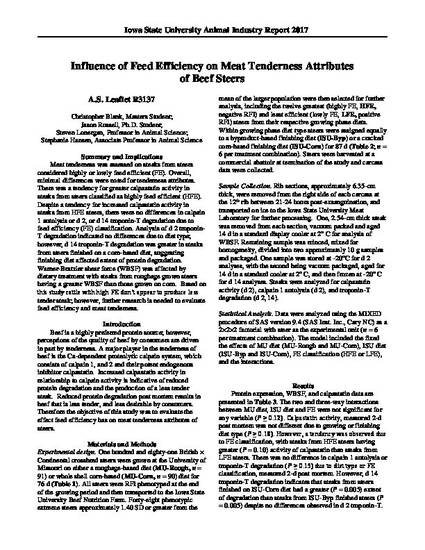
Meat tenderness was assessed on steaks from steers considered highly or lowly feed efficient (FE). Overall, minimal differences were noted for tenderness attributes. There was a tendency for greater calpastatin activity in steaks from steers classified as highly feed efficient (HFE). Despite a tendency for increased calpastatin activity in steaks from HFE steers, there were no differences in calpain 1 autolysis or d 2, or d 14 troponin-T degradation due to feed efficiency (FE) classification. Analysis of d 2 troponin-T degradation indicated no differences due to diet type; however, d 14 troponin-T degradation was greater in steaks from steers finished on a corn-based diet, suggesting finishing diet affected extent of protein degradation. Warner-Bratzler shear force (WBSF) was affected by dietary treatment with steaks from roughage grown steers having a greater WBSF than those grown on corn. Based on this study cattle with high FE don’t appear to produce less tender steak; however, further research is needed to evaluate feed efficiency and meat tenderness.
Available at: http://works.bepress.com/steven_lonergan/135/
